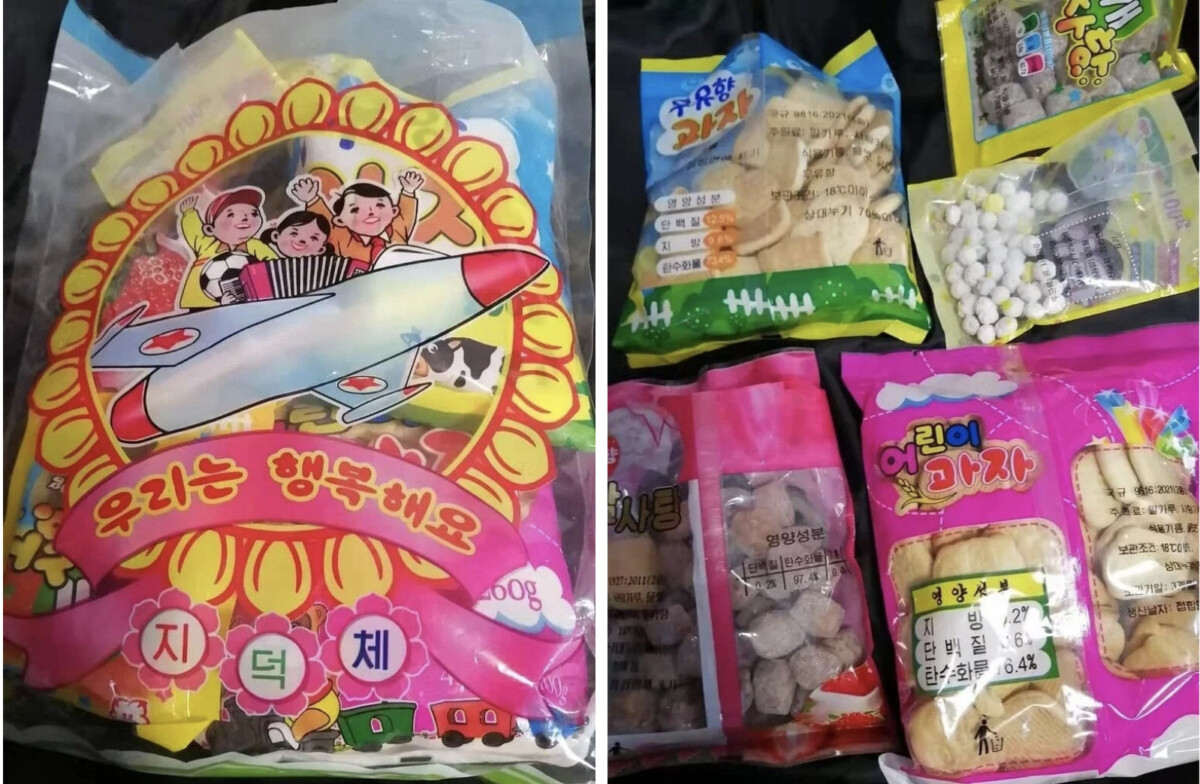How our childhood gifts from the benevolent leader actually came from the sweat of our parents

When I was growing up, the most special days of the year were the Day of the Sun on April 15 and the Day of the Shining Star on February 16. Readers will know that these are the birthdays of the founding dictator Kim Il-sung and his son Kim Jong-il.
Kindergartens and schools distributed gifts to us on these days. That’s what made them special. Whatever the official cause of celebration, they were days when we got presents.
The things in those bags always felt precious. In reality, they were modest. In fact, by today’s standards, they were very simple. But back then, how eagerly we anticipated them. Some children waited quietly for days, while others came to school in high spirits. I still remember the joy of holding that bag tightly and carrying it home.
“This is thanks to the benevolence of our Great Leader and the General,” teachers told us, referring to the two Kims.
We wrote them thank you letters. We sang songs. We bowed deeply. “Thank you, Father Generalissimo,” we said. Repetition ingrained the belief that the Kim family personally provided the gifts. As children, we accepted that idea without question.
Reality, however, was different. Gifts varied by region. Children in Pyongyang received better-packaged, higher-quality items. Ours were poorly wrapped or incomplete. On occasions, the bags of snacks were crushed. Some had more candy than others.
Weights were inconsistent. Usually one to 1.2 kg, but never fixed. In one family, three children argued whose bag was lighter until their mother weighed them: 0.9, 1.0, and 1.1 kg. Identical bags, yet contents varied each time.
Still, we didn’t complain. Joy outweighed disappointment.
We did not understand why gifts came only on certain dates or why they were always framed as “the Leader’s love.” Schools repeated stories of Kim Jong-il being so devoted to the people that he slept in his car instead of at home in bed. They told us how he ate simple meals during inspections to farms and factories, and how, all the time he was preparing candy for us. I believed them.
Only when I was grown up did I wise up. These gifts were not Kim’s benevolence. They were the result of assignments imposed on institutions, factories, and collective farms. In the lead up to these holidays – April 15, February 16, and January 8, which is Kim Jong-un’s birthday – people had to contribute. Farmers offered eggs, sesame, beans. Factories handed over quotas. Quality and quantity differed by region because they depended on local conditions and what was available.
The bag I joyously held was in fact the fruit of the labor of my parents and my neighbors. Even the candy in my mouth came from their sweat. Yet, all the while, propaganda gave all credit into “the Leader’s care.”
Under Kim Jong-un, packaging improved somewhat. Wrappers were actually printed wrappers, snacks were refined, confectionery was higher-quality. But the structure remained unchanged. Assignments continued, and gifts were produced under quotas.
This practice dated back to April 15, 1979. Then in 1982 it expanded to include February 16. Since 2013, kids have gotten gift packages on January 8. The dates increased, but the method never changed.
Our parents were not fooled. They knew the truth but they could not speak openly. Even to their children they had to say, “This is all thanks to the Leader’s grace.”
As I grew older, I saw the deeper purpose. After gifts, came “appreciation ceremonies,” slogans, and performances. These rituals linked a child’s joy directly to propaganda. Gifts made us happy. But at the same time they functioned to indoctrinate us.
After coming to South Korea and experiencing the ability to freely buy things, I recalled those childhood gifts. Why did a single candy have to carry such meaning? Why was it always explained as “the Leader’s love”? The memory now leaves a bitter taste. It is proof that North Korean society operated under scarcity and control.
Children’s gifts in North Korea were never simply about kindness. They were the product of sweat and sacrifice from parents and neighbors, disguised as the benevolence of our dictators. The joy we felt clutching a bag of candy was real, but it was joy built on exploitation. Every sweet carried the hidden labor of farmers, factory workers, and families who had to contribute their share so the regime could stage a spectacle in its own interest.
The irony is that the spectacle was not even for us children. It was for the system. Gifts were designed to implant loyalty in young minds, to make gratitude toward the Kim family feel natural, even inevitable. What should have been innocent childhood happiness was weaponized for political indoctrination.
Looking back, I understand why those memories are bittersweet. The laughter of children was genuine, but carefully orchestrated to mask scarcity, control, and exploitation. The “gifts” were not gifts at all. They were instruments of dictatorship, symbols of a society where even a child’s joy was manufactured to serve power.
This is why I write. I want to show that behind every cherished childhood memory lies the hidden burden of our parents and people, and to expose how the regime turned something as simple as candy into a tool of control. The gifts we remember with happiness were, in truth, the regime’s way of binding us to its rule from an age before we could think for ourselves.
- Kim highlights power plant construction…Ignores people’s suffering - November 25, 2025
- How our childhood gifts from the benevolent leader actually came from the sweat of our parents - November 24, 2025
- Kim Jong-un visits Supreme Court, prosecutors, and security agencies, emphasizing their role as vanguard of regime defense - November 22, 2025

